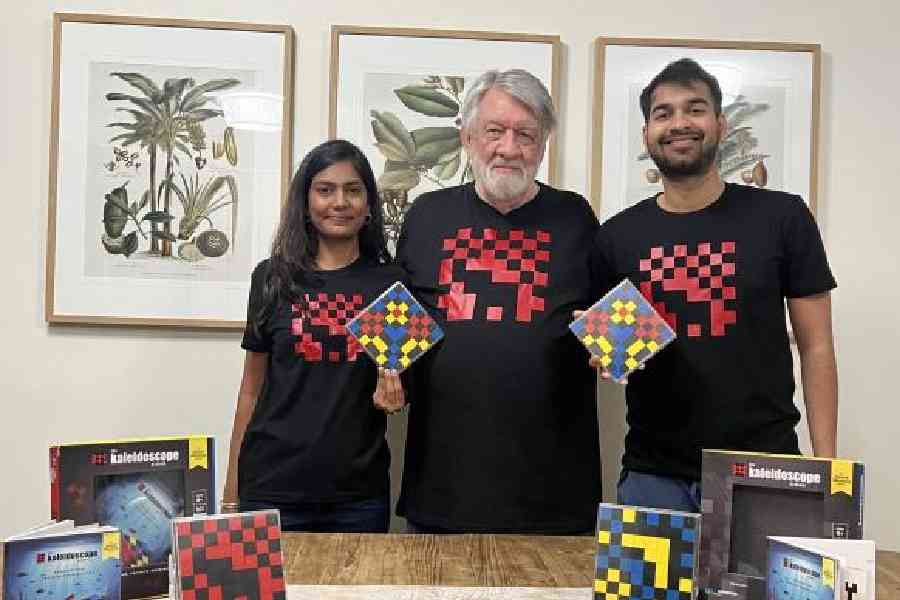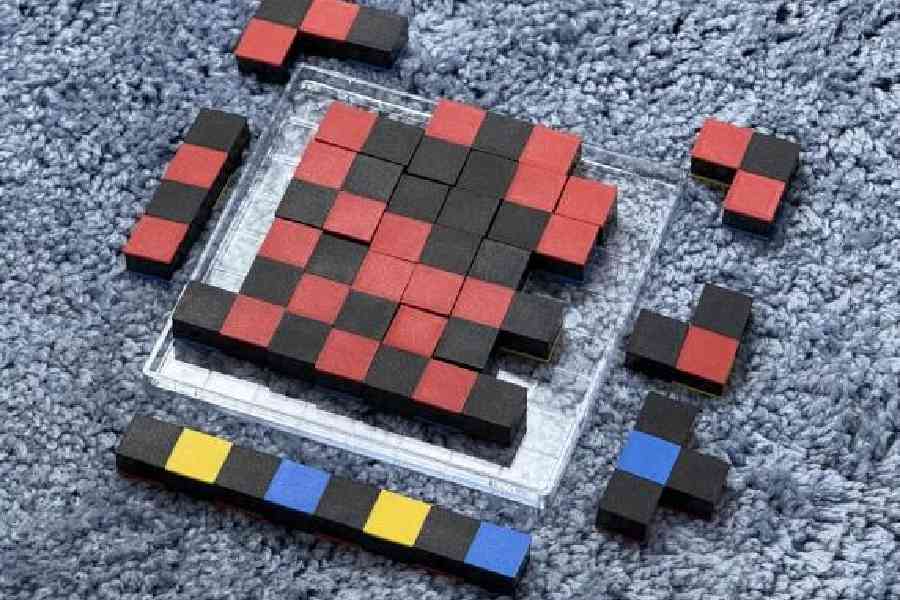The problem with most puzzles is the one-solution approach. Once solved, you don’t want to go back to it again because the solution will remain the same. Breaking the mould is chess, which can be played again and again because strategies change with each game. Another such puzzle is the Kaleidoscope Classic, one of the most interesting titles available online or at a store like Starmark or at Crossword (Mumbai).
The creation — has sold over a million units since it was introduced — of Mark T. Wood continues to attract people across age groups even after decades. The 82-year-old inventor is proud of what he has come up with.
“The body gives problems as you age. Doing puzzles keeps the mind active. It has a positive effect and this has been documented in research. If you do crossword puzzles and if you do things that challenge the mind, you keep growing in many ways. When you drive home, take a new route if you can; it will challenge the mind,” Wood told us over a Zoom call from his home in Gold Coast, Australia.
Kaleidoscope Classic is unique and simple. There are four different colours, 18 pieces but endless possibilities when it comes to creating beautiful patterns. It’s gymnastic for the brain.

Natasha Kedia Jatia and Rishi Jatia of Mindwork Games with Mark T. Wood (centre)
“I think of it as a puzzle and not a game. Puzzles have longevity because challenges encourage thinking rather than the competitive nature of who comes first. Challenges tend to keep their attraction to the population over a long period of time,” he said.
His game is enjoyable offline as well as over the Internet. “Chess puzzles can be played over the Internet but people still buy chessboards and play each other across a table. So the two systems complement each other and make it attractive to many people of today’s generation.”
Life is a puzzle
The man has been busy coming up with puzzles for decades. It’s an “obsession” that has remained steady even while he moved from one country to another.
He was born in Springfield, Ohio, and attended Hiram College. In 1964, at the age of 22, he left the country. By that we mean, he relinquished his citizenship and became a citizen of Sweden. In 1970 he graduated from the University of Uppsala, with a master’s degree in psychology. Life took another turn, bringing him to New Zealand, where he lived and worked for five years.
Next stop: He moved to Toowoomba, Queensland, Australia, in 1976 to lecture in behavioural science at the University of Southern Queensland and later lectured in developmental psychology at the University of New England in Armidale.
“The environment adds to the excitement of challenges, it lets me put things into a puzzle without getting in the way. I am enjoying a pleasant world on the Gold Coast, there is freedom to be creative. I have an obsession with puzzles. It’s great to see the joy in people when they think they can’t come up with a solution but ultimately do.”
Another unique aspect of Kaleidoscope Classic is that it’s language-agnostic. Someone in India could be solving it differently from someone in, say, Japan or Korea. There are no specific rules, mirroring one of life’s big joys — two plus two don’t always result in four. You can keep coming up with different patterns.
“Anybody can play the game. People who want a boost in confidence would enjoy it as much as a teenager. Everyone can get good at it. I have seen people in India enjoy this advantage. Some people say they cannot solve puzzles. I ask them to give it a try. I like to teach that each person solves a problem in a unique way. I inculcate thinking strategies and help people be more effective in handling problems. When someone solves a challenge, they think more effectively,” said Wood.
Good for developing minds

The challenge lies in using all the pieces in the right combination. Some challenges may take a few minutes while others would take hours
Mindwork Games has teamed up with Wood to give this award-winning classic (which has picked up awards in Australia and Europe) a comeback tour this year in its physical glory (digital version will be out soon).
“Generations after generations can find enjoyment in the puzzle. You can use it in schools, or while waiting for the medical practitioner. I hope people enjoy the intellectual aspect,” he said. “I have been interested in how the mind works, so I have studied psychology and I would do various puzzles. But most challenges come with one solution and once you solve it, you put it on a shelf. Or if you can’t do it and you’re frustrated, you put it on the shelf. Kaleidoscope Classic is different.”
Over the years, several puzzles have interested him. For example, jigsaw puzzles are “magnificent”: “You solve one but then you have to buy another one. In this case, the challenges keep coming and you don’t have to buy one puzzle after another. It’s good for developing minds at all levels,” he said.
Since he retired from active service as a psychologist in October 2013, he has been on an overdrive to come up with new solutions and puzzles.
“I have enjoyed the many impulses India has to offer and have integrated them into the puzzle, not just the elephant motif, which is central, I have a number of other pictures that make me think of things happening in India.”
The puzzle offers fun challenges for everybody from age six to 106. Deceptively simple in its design, each of the 18 geometric pieces is different in shape, size and colour. Putting them together can result in many combinations. You can create butterflies, flowers, people, sports… the possibilities are endless. The challenge lies in using all the pieces in the right combination. Some challenges may take a few minutes while others would take hours. Each time you solve the puzzles, you will feel proud of yourself. The game is excellent for school-going kids to improve their cognitive thinking and spatial skills.
“At times you feel your way is the only way to solve a pattern because it took you an hour or two hours. And then you see somebody else with the same picture of the same challenge but they did it their way. That’s the exciting thing about this. There are a number of pictures to get the right picture.”
It’s a bit like life: We are headed in the same direction but taking different paths.










